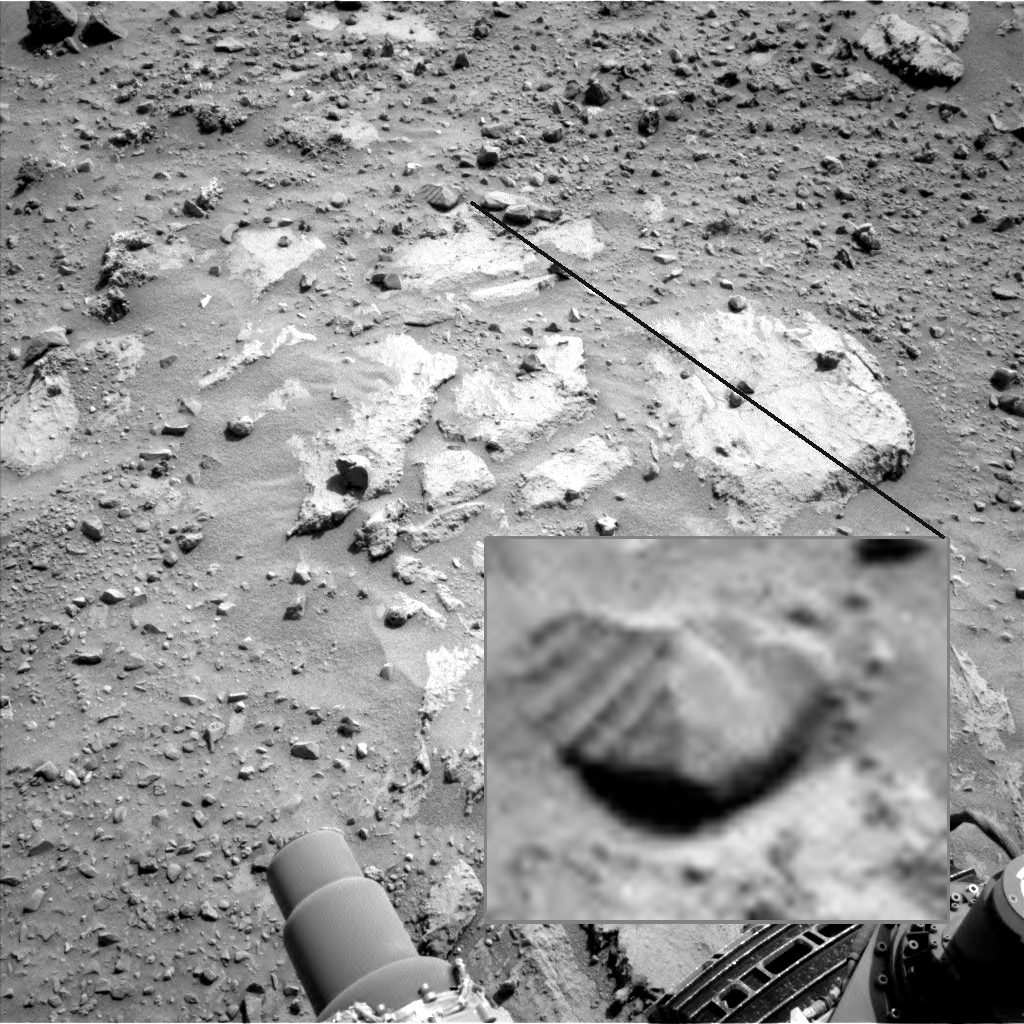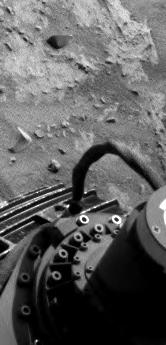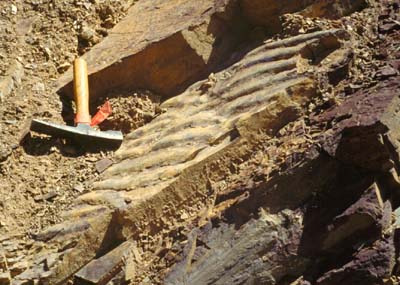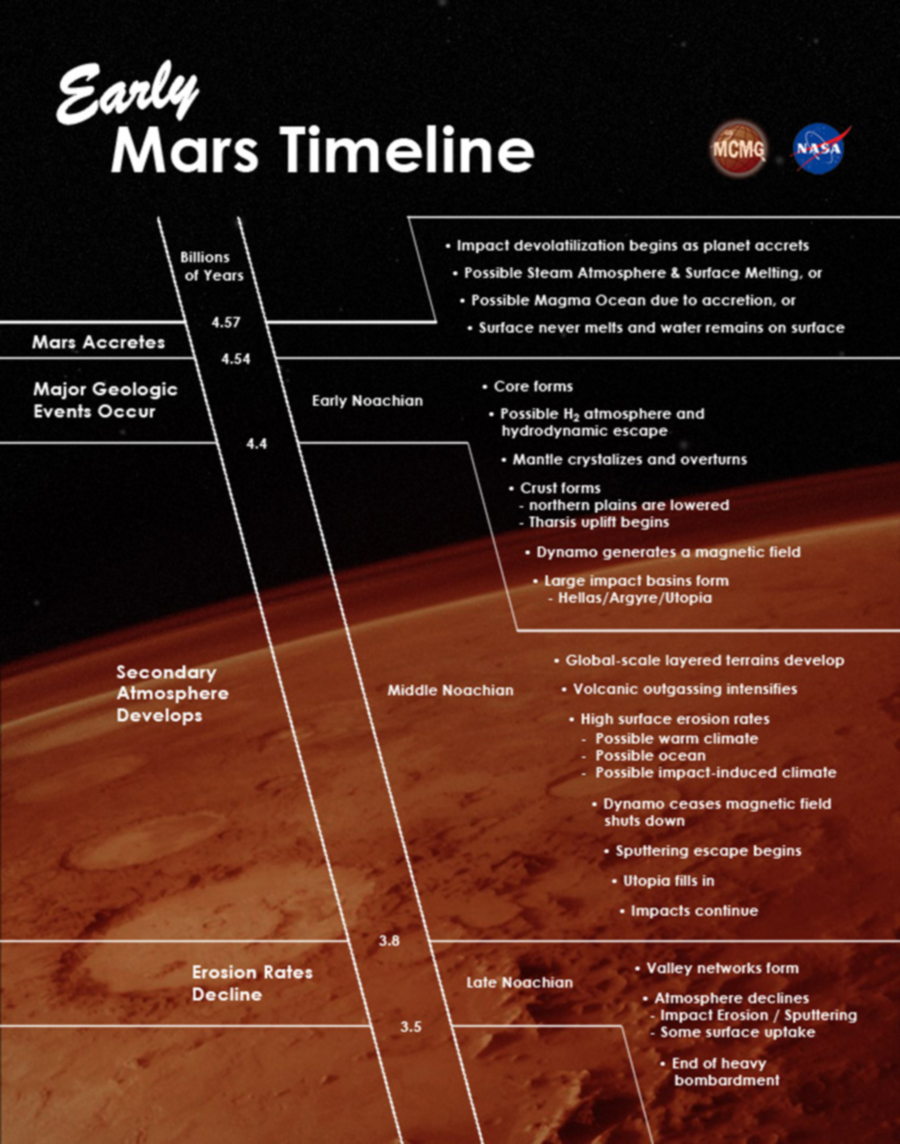It looks like you're using an Ad Blocker.
Please white-list or disable AboveTopSecret.com in your ad-blocking tool.
Thank you.
Some features of ATS will be disabled while you continue to use an ad-blocker.
share:
a reply to: Arken
Howdy,
I think you misinterpreted what I said. I said your hypothesis didn't hold water, not that Mars didn't. I am well aware of the large amounts of water that once were and likely still are on Mars. Seriously, the presence of large granite fields is enough evidence for me.
As for the amateur vs. NASA pictures, can I ask under what conditions each was taken? With what kind of optical lenses? I'm not an optics expert, but the amateur pic shows a lot of chromatic aberration, which might indicate some... issues.
en.wikipedia.org...
Kind regards indeed,
Hydeman.
Howdy,
I think you misinterpreted what I said. I said your hypothesis didn't hold water, not that Mars didn't. I am well aware of the large amounts of water that once were and likely still are on Mars. Seriously, the presence of large granite fields is enough evidence for me.
As for the amateur vs. NASA pictures, can I ask under what conditions each was taken? With what kind of optical lenses? I'm not an optics expert, but the amateur pic shows a lot of chromatic aberration, which might indicate some... issues.
en.wikipedia.org...
Kind regards indeed,
Hydeman.
350 million years is a figure that comes from modeling the mars atmosphere as we believe it existed and how long it would take to have the majority of nitrogen and oxygen molecules migrating to the top of the atmosphere get knocked off into space by solar radiation and other things. basically i found it as part of an argument for or against terraforming mars. if we could put earths atmosphere on mars it would persist "only" 350 million years. which if you think of it is many many many times more than humanity has existed on earth. so that's not really a problem.
originally posted by: funbox
a reply to: stormbringer1701
350 million years , that's a new figure to me , ill never get the hang of the martian timeline , its almost as bad as earths
funBox
but that did not take into account either the effects of oceans and hydrology or even how much of a back filling the presence of an ocean would have on atmospheric losses for that matter it does not take into account the effects of a molten core and plate tectonics (i.e. O2 and other gases locked in mineral form or being dissolved in magma being freed and making up in part for atmospheric losses.)
EDIT: because mars is nowhere near as large as earth there is less pressure in the interior to act as a heat generation source. dynamism requires a molten core. dynamism is responsible in large part for a strong magnetic field that would shield the upper atmosphere from most solar radiation and cosmic rays so the atmospheric loss rate is much larger than earth's. we (at least I) do not know how long Mars had a molten core and thus had a strong magnetic shield. another factor is the amount of thorium and Uranium. these elements shed heat and are in part responsible for earth's core remaining molten. even if mars has the same ratio as earth of these element because it is less massive it will have less of these to keep it warm. at some point mars would lose it's molten core and dynamism except maybe residual pocket. it dropped its shields and thus ensured it would lose it's atmospheric oxygen and nitrogen. another reason is earth's gravity makes it harder for out-gassing of the atmosphere to occur.
however mars is red due to oxide minerals. it's rusty. but that means oxygen, massive amounts of it, are trapped in mineral form in it's regeolith. and conceivably that oxygen could be liberated to regenerate the atmosphere. and if that were done it would last longer than human life and civilization has existed so far by many many many many many etc... times.
edit on 14-7-2014 by stormbringer1701 because: (no reason
given)
edit on 14-7-2014 by stormbringer1701 because: (no reason given)
a reply to: stormbringer1701
so.. not quite a stab in the dark then , missed variables that are just too ball park, for their quantum computed models.. o well , they could have at least rounded up too 400 mill
EDIT
great read by the way, a question , you didn't mention how they would re activate the core in their hypothetical terraforming scenario , did they have a proposition, and do you have a link to the paper?
funBox
so.. not quite a stab in the dark then , missed variables that are just too ball park, for their quantum computed models.. o well , they could have at least rounded up too 400 mill
EDIT
great read by the way, a question , you didn't mention how they would re activate the core in their hypothetical terraforming scenario , did they have a proposition, and do you have a link to the paper?
funBox
edit on 14-7-2014 by funbox because: irradiated wolves glow red
that was not covered seriously because the only ways i know of are too far future tech and based on (in one case) physics yet to be proven and in the other case making radical alterations to the mass and surface of mars which would destroy any gelogical record or any evidence of extinct life and likely kill any remaining life.
originally posted by: funbox
a reply to: stormbringer1701
so.. not quite a stab in the dark then , missed variables that are just too ball park, for their quantum computed models.. o well , they could have at least rounded up too 400 mill
EDIT
great read by the way, a question , you didn't mention how they would re activate the core in their hypothetical terraforming scenario , did they have a proposition, and do you have a link to the paper?
funBox
as far as i know it could be done two ways or a combination of these two ways.
the fantasy physics way is to use trillions of quantum wormholes to introduce elemental bits of uranium and thorium to the core and mantle and lower crust to augment Mar's natural supply to compensate for Mar's reduced mass 9 in comparison to earth) while keeping the uranium and thorium fromm accumulating in clumps that could create a natural reactor or worse have a super critical reaction. the issue is we dun haz any wormhole technology.
the second way would also solve the low gravity situation for future colonists but would radically alter mars character. it involves using self replicating mini drones to gather asteroid material and dust and kuiper and Oort material to then deposit it on Mars such that the mass of mars would be increased to earth like levels. the increased gravity and pressure would then likely re-liquify the core and re-plastify the mantle. with self replicating drones this would take much less time than one would at first suppose. the drones of course need limiting programming to prevent replication after a certain number of replications and to prevent them from caniballizing items and planets and people etc that we don't want them to do. the drawbacks are that mars would be completely wiped clean of its character and history.
a reply to: stormbringer1701
hmm both messy scenarios
maybe its best just to leave mars alone , beside,s there's enough asteroids out there to be making a new planet from, also with the added benefit of removing future extinction events
funBox
hmm both messy scenarios
maybe its best just to leave mars alone , beside,s there's enough asteroids out there to be making a new planet from, also with the added benefit of removing future extinction events
funBox
making a planet would be possible with self replicating drone workers subject to proper safety programming. the only issue is the amount of material
available was said to be about ten percent of that is necessary to replicate earth. but that was then and this is now. now we know about dwarf planets
in trans-pluto space. and we know much more about asteroids now than then.
originally posted by: Halfswede
originally posted by: Swills
a reply to: zilebeliveunknown
I disagree it's a fossilized shell. Looks like a broken rock to me. Google fossilized shells.
Not arguing that it is a shell, but google 'fossil shell imprint' and you will find a lot with almost the exact fossil patterning. It is easy to say that it is not a shell, but it does actually "look like" a fossil shell imprint.
This is what I think. It's a rock with an imprint of a shell...
just added the right and left navs for that bouncy effect , I think there's some overspill myself

funBox

funBox
originally posted by: Spacespider
What the hell is that sticking out from the rover...
looks like fossilize wood

a reply to: Swills
I agree. Sometimes it is difficult to separate something from its context. My feeling is that if the pic were from earth, most people would be fine with the shell-fossil imprint conclusion given the similar examples. That said, those similarities don't make it a shell fossil. It could very well be riffles from solidified creek-bed, or a the edges of a magma flow where it piles up against itself.
I used to build a lot of rock walls and we would hand select from a few different quarries. There are plain old rocks that look like all kinds of stuff. Without a sample brought back, it is pure speculation regardless of how much it may or may not "look like" something.
I agree. Sometimes it is difficult to separate something from its context. My feeling is that if the pic were from earth, most people would be fine with the shell-fossil imprint conclusion given the similar examples. That said, those similarities don't make it a shell fossil. It could very well be riffles from solidified creek-bed, or a the edges of a magma flow where it piles up against itself.
I used to build a lot of rock walls and we would hand select from a few different quarries. There are plain old rocks that look like all kinds of stuff. Without a sample brought back, it is pure speculation regardless of how much it may or may not "look like" something.
Can someone tell me what makes more sense?
1. NASA covers up UFOs, artifacts and structures, on the Moon and Mars via airbrushing etc. While doing all this, they release ufo vids, and pictures of structures and artifacts on the Moon and Mars.
-OR-
2. The artifacts and structures on these alien surfaces have natural explanations but look intriguing thanks to shape, lighting etc.
1. NASA covers up UFOs, artifacts and structures, on the Moon and Mars via airbrushing etc. While doing all this, they release ufo vids, and pictures of structures and artifacts on the Moon and Mars.
-OR-
2. The artifacts and structures on these alien surfaces have natural explanations but look intriguing thanks to shape, lighting etc.
I am in the camp that says NASA missed something by not checking this out further. They know that there had been water there in the past. I do not
think it is a shell, but rather, ancient ripples on a sandstone surface. There are many examples of it preserved in Earth history.

Even if Arken's example is not a shell, it is important none the less.
, Source: Ancient tidal ripples preserved in stone.
Ripples are symmetrical and show "tuning-fork" branches. This indicates to a geologist that the sandstones were deposited in an environment with wave action (nearshore).

Even if Arken's example is not a shell, it is important none the less.
edit on 15-7-2014 by charlyv because: Spelling
a reply to: Arken
A bit late in this discussion, but thanks to you and funbox for bringing this to our attention. It definitely looks different from a lot we've seen up to now, especially when comparing this feature to the surrounding rocks.
Whether ancient tidal ripples preserved in stone or something else, I think a quick MAHLI shot would be absolutely justified in order to check out the details, regardless of the increased transmission bandwith for hi-res images and the effort it takes to program that instrument arm ...
A bit late in this discussion, but thanks to you and funbox for bringing this to our attention. It definitely looks different from a lot we've seen up to now, especially when comparing this feature to the surrounding rocks.
Whether ancient tidal ripples preserved in stone or something else, I think a quick MAHLI shot would be absolutely justified in order to check out the details, regardless of the increased transmission bandwith for hi-res images and the effort it takes to program that instrument arm ...
edit on 15-7-2014 by jeep3r because: text
originally posted by: Spacespider
What the hell is that sticking out from the rover...
looks like fossilize wood
Yes Rover saw a lady Rover on Mars and got a little excited.
new topics
-
Joe Rogan conspiracy (maybe)
ATS Skunk Works: 1 hours ago -
Results of the use of the Oreshnik missile system in Dnepropetrovsk
World War Three: 3 hours ago -
Nigel Farage now the Most Favoured UK Politician
Regional Politics: 4 hours ago -
Little Johnny and Larry should team up
General Chit Chat: 11 hours ago -
Will Us use alien technology to fight in ww3?
World War Three: 11 hours ago
top topics
-
Results of the use of the Oreshnik missile system in Dnepropetrovsk
World War Three: 3 hours ago, 10 flags -
Little Johnny and Larry should team up
General Chit Chat: 11 hours ago, 9 flags -
Shane Gillis commercial
Jokes, Puns, & Pranks: 17 hours ago, 4 flags -
Will Us use alien technology to fight in ww3?
World War Three: 11 hours ago, 2 flags -
Nigel Farage now the Most Favoured UK Politician
Regional Politics: 4 hours ago, 2 flags -
Joe Rogan conspiracy (maybe)
ATS Skunk Works: 1 hours ago, 1 flags
active topics
-
Results of the use of the Oreshnik missile system in Dnepropetrovsk
World War Three • 82 • : RussianTroll -
Well we know Putins ICBMs won't fail in their silos
World War Three • 191 • : Xtrozero -
President-Elect TRUMP Picks Former Florida A.G. PAM BONDI to be U.S. Attorney General.
2024 Elections • 53 • : Xtrozero -
Joe Rogan conspiracy (maybe)
ATS Skunk Works • 2 • : watchitburn -
Little Johnny and Larry should team up
General Chit Chat • 3 • : bluesman023 -
President-Elect DONALD TRUMP's 2nd-Term Administration Takes Shape.
Political Ideology • 238 • : WeMustCare -
Will Us use alien technology to fight in ww3?
World War Three • 11 • : BeyondKnowledge3 -
A Mysterious Orb filmed over NYC by local news
Aliens and UFOs • 25 • : ArMaP -
The Popular Vote does not matter
Political Issues • 14 • : texas thinker -
Shane Gillis commercial
Jokes, Puns, & Pranks • 2 • : Flyingclaydisk

